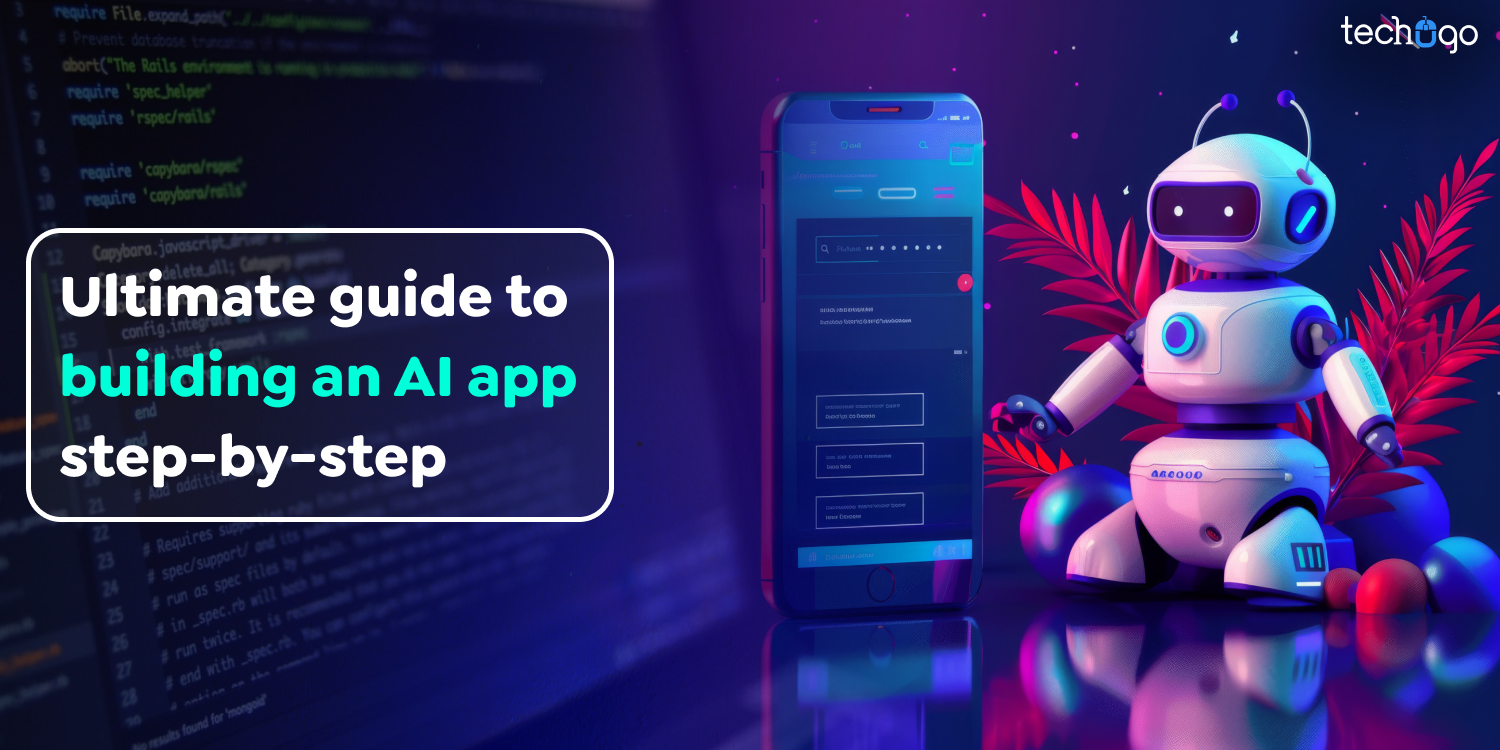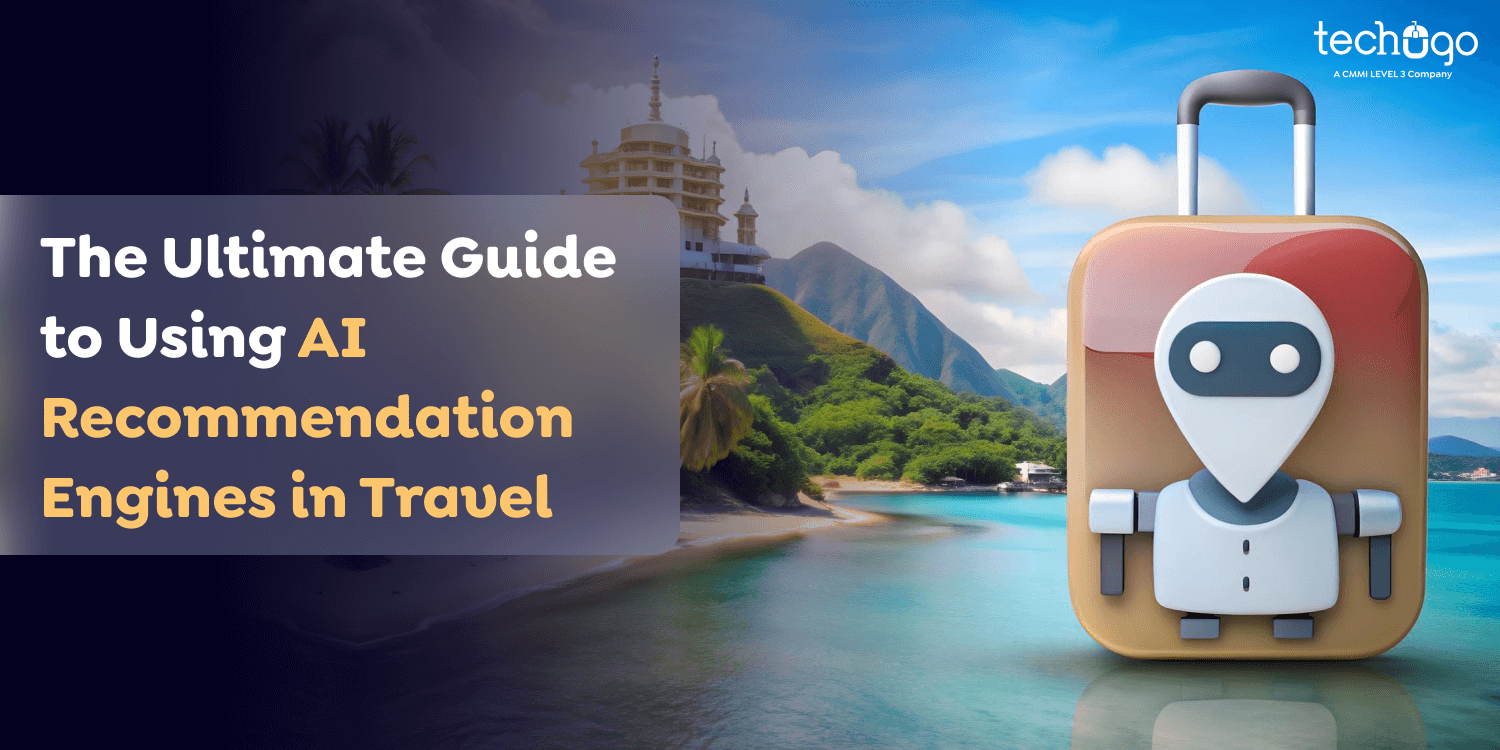23 Oct 2024
How Artificial Intelligence Software is Transforming Modern Business Practices
Matthew Connor
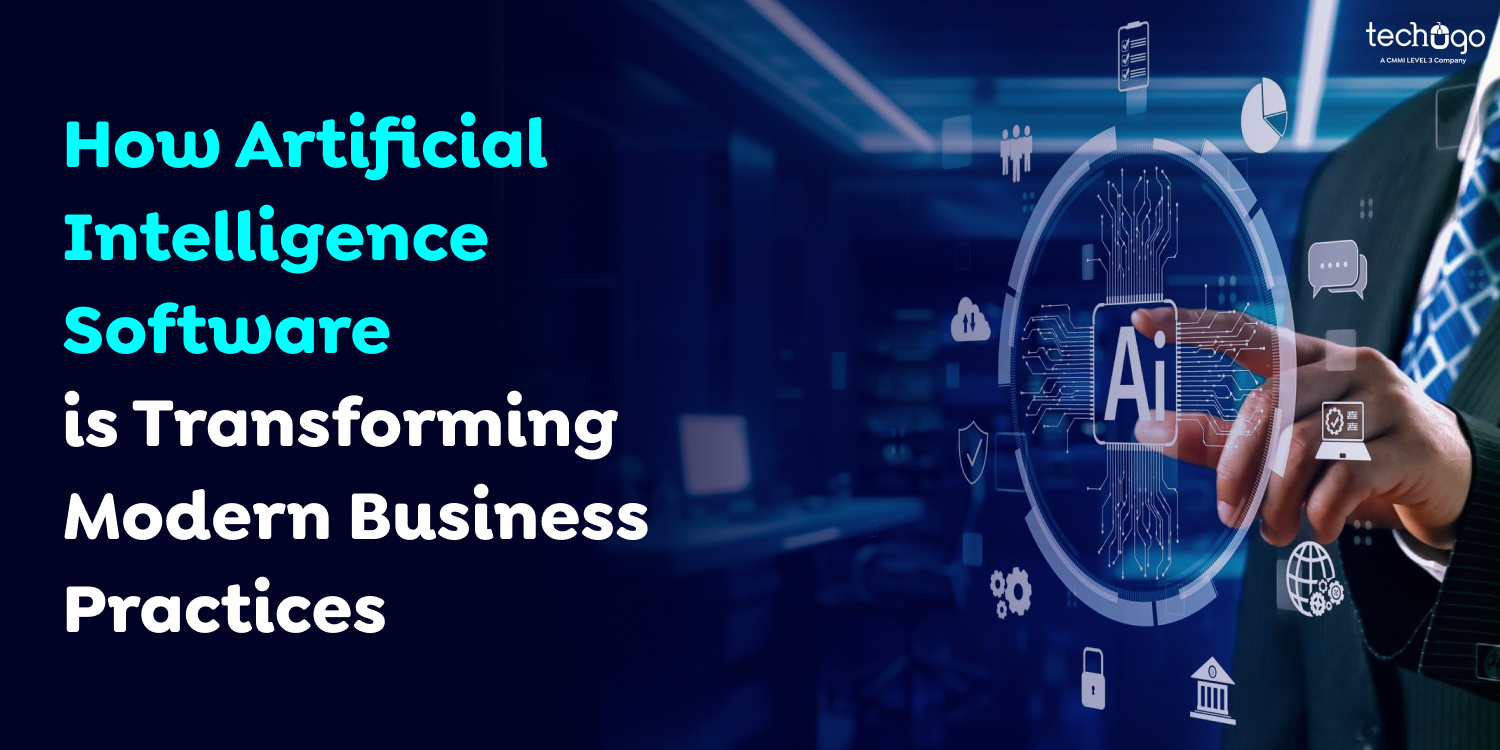
AI (Artificial Intelligence) is a new technology that is changing the business environment today. From entertainment to education, all industries use the advantages of artificial intelligence to transform their business practices.
Whether it’s virtual assistants or recommendation systems, taking an Artificial Intelligence course helps people with various tasks to make life easier. Although AI might appear to be an enormous and complex subject, it’s becoming extremely accessible to many people who wish to employ AI developers to create their own artificial intelligence software systems.
In this blog, we’ll look at ways to build artificial intelligence and integrate it into an existing system. Low-cost Python hosting is significant in democratizing accessibility to AI technology, stimulating creativity, and allowing developers to explore and implement artificial intelligence software cost-effectively and effectively.
What is an AI?
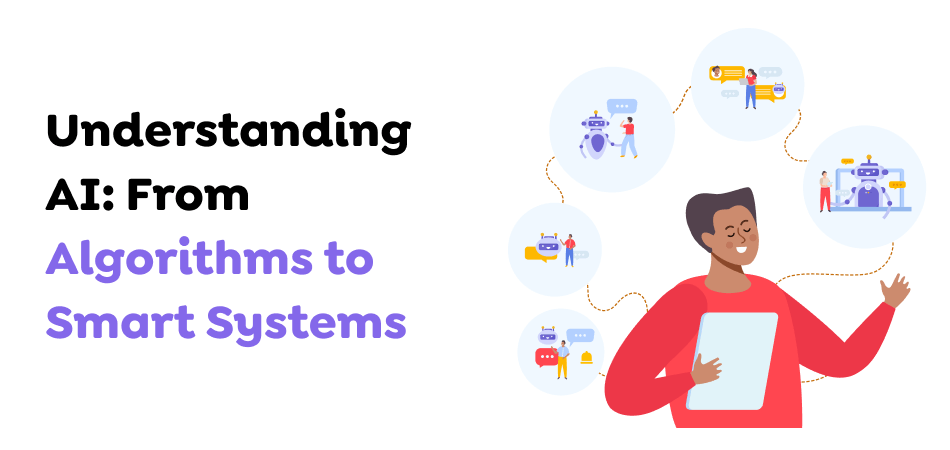
Before we get into AI creation, we need to be aware of the fundamental notions and fundamentals of AI technology. AI is a form of computer (or system) intelligence that is able to carry out a variety of crucial tasks, such as problem-solving, understanding natural language, making decisions, and quickly understanding patterns.
AI systems are designed to replicate human cognitive abilities like thinking, perception, problem-solving, and more. You need to be aware of three primary kinds of AI before embarking on developing AI systems.
1. Artificial Narrow Intelligence:
Developers specifically design and train ANI, also known as Weak AI or Narrow AI, to complete specific tasks with a limited range. It excels at performing only the tasks that have been pre-programmed and specified. Some of the most efficient applications of ANI include language translation, speech recognition, facial recognition, natural language processing, and more.
2. Artificial General Intelligence:
AGI is frequently called intelligent AI. It is capable of thinking and performing tasks at the level of human intelligence. AGI can quickly recognize how to apply knowledge across many different fields. However, AGI systems are hypothetical as they haven’t been proven to have a similar level of intelligence.
3. Artificial Superintelligence:
Like AGI, Artificial Superintelligence is an imagined system that could outdo human intelligence. ASI could rapidly beat the human brain in a range of fields, such as innovation, decision-making, and problem-solving. The success of ASI is a significant social question.
Also Read : AI in Recruitment: Revolutionizing the Hiring Process for Businesses
Advantages of AI
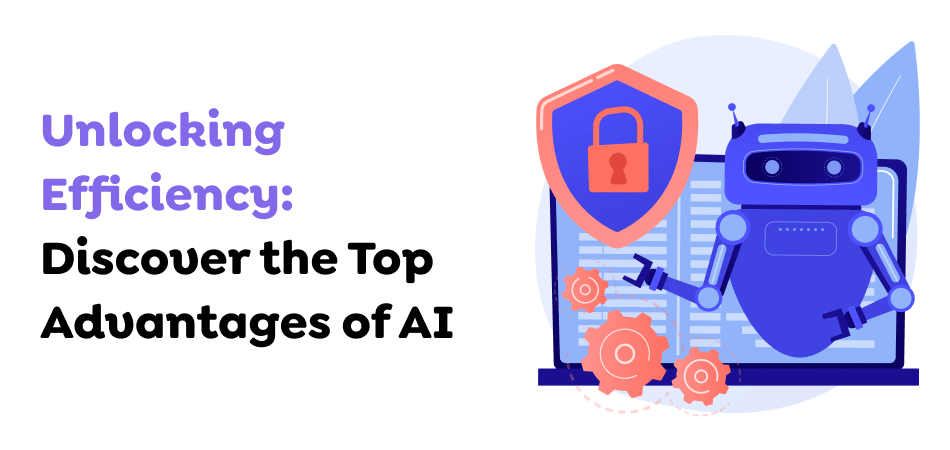
Everyone is aware that AI can give businesses an advantage. The Appen AI State of AI Report for 2021 states that all businesses face an urgent need to incorporate AI and ML in their business models or are at risk of getting left out. Businesses are increasingly using AI to improve the internal process (as well as various processes and applications that interact with customers). Implementing AI will help your company get its goals faster and more precisely.
1. Eliminates Human Errors as well as Risk
The most significant benefit of implementing AI is that it reduces human error and increases risk for humans.
Everybody makes mistakes from time to time. This isn’t always an issue; however, it could be when you’re trying to produce consistently good results. Utilizing AI to finish tasks, especially repetitive ones, could keep human error from contaminating an otherwise valuable item or service.
Similarly, using AI to perform particularly challenging or risky tasks can reduce the possibility of injury or even harm to humans. One instance of AI taking risks on behalf of humans is robots used in areas with high radiation. Humans are susceptible to getting seriously sick or dying due to radiation, but robots aren’t affected. If a fatal mistake occurs and the robot is destroyed, it can be rebuilt.
2. 24/7 Accessibility
AI programs are accessible 24/7, while humans are on call all day. Machines are able to work throughout the night and during the day and AI-powered chatbots are able to offer customer support even in non-working hours. This will help businesses increase their productivity and deliver more customer service than humans alone could.
3. Unbiased decision making
Humans aren’t always in agreement and let their prejudices influence their decisions every day. Every human has biases, and even when we try to overcome these, they are able to slip into the gaps.
However, when the AI algorithm is trained with objective datasets and examined to determine if it has programming bias, the program can make decisions free of bias. This can provide greater confidence in decisions like choosing the right job applicants and approving loans or credit applications.
However, if the AI was developed with biased data or training data, it may make a biased decision that needs to be detected because people believe that they are impartial. This is why quality tests are necessary for the training data and the outcomes of a particular AI program to ensure bias issues aren’t missed.
4. Repetitive jobs
Every exciting job on the planet includes many mundane or repetitive tasks. It could involve taking and analyzing data, creating reports, checking data, etc. Using an AI program could free us from boredom caused by repetitive tasks and help us save energy for other tasks that require more power and creativity.
5. Cost reduction
As mentioned, AI can always work around and create more value within the same timeframe as humans. Since AI can take the burden of manual work, this frees workers to perform more skilled tasks. Ultimately, it creates greater value for the end user or customer.
6. Analyzing and acquiring data
When you think about processing data, the volume of data produced is far greater than the human capacity to comprehend and analyze it. AI algorithms can handle more significant amounts of complex data, which makes them suitable for investigation.
Also Read : AI for Enterprise: Transforming the Future of Business Through Innovation
Disadvantages of AI
The challenges in the development of AI (and solutions)
1. Integrity and Security in the Content
The data quality used in training machine-learning algorithms could affect their efficiency in the real world. If there is no rigorous method of verification or methods to clean the data, incorrect or incomplete data could undermine AI decisions over the long term. Thus, continuous efforts to detect new anomalies and maintain the most rigorous data standards are crucial.
Similar to how AI handles more sensitive personal information and business processes, it is essential to implement layers of security, including access controls, in addition to encryption of data and monitoring of activities and governance policies, which reduce the risk of a risk. This ensures that nobody is able to gain access to information or data loss regardless of whether AI is implemented more extensively.
2. Ethics Concerns
The code comprises two primary ethical issues that must be considered when developing AI software. One of them is reducing bias. The other aspect to consider is security. If you don’t have a proper surveillance system, problems like discrimination could arise. It is vital to secure user’s data and block access to data that isn’t legally authorized.
To eliminate bias, start by conducting a fair and accurate data collection. After that, you must analyze the data to eliminate any biases. Algorithms such as decision trees can be used to prevent the creation of disparate effects for particular groups. Verify fairness before and after Implementation by using indicators.
To protect your privacy, it is essential to establish security measures for access and encryption from the beginning to the end of the process. Secure your environment to protect against potential attacks.
It is vital to ensure ethical conduct and the security of an AI system. Use techniques to explain outputs like LIME (Local Interpretable Model-Agnostic Explanations (LIME) or SHapley Additive exPlanations (SHAP)) that enhance the ability to understand. Integrate human reviews to ensure that the models are in good condition. Continuously monitor models to spot changes.
3. Legal Issues
Data privacy concerns, algorithm biases, and regulatory compliance are all essential legal risks to be considered. The outcomes generated by algorithms with biases could cause litigation and sanctions.
Marketing managers who depend on AI and customer data require teams with cross-functional capabilities from the start. This includes ethicists, lawyers, and technology experts.
Through thorough examinations by experts, you’ll be able to detect issues early and then take steps to reduce the legal problems.
There is a way to hide information from customers to ensure the security and confidentiality of data. Additionally, you can perform periodic bias checks to identify any discrimination issues in advance and ensure they are rectified before launch. Check regularly to make sure that you’re following any applicable regulations. These steps can help you ensure you have an established control process.
4. Inefficient Infrastructure
Many businesses depend upon outdated technologies, applications, and networks that can’t support AI’s processing needs. AI could increase operations’ efficiency, which requires higher knowledge. This means that infrastructure needs to be upgraded to keep up with current quality and performance standards.
Plan your actions to ensure seamless transition from the older technology to the most modern architectures which improve efficiency and efficiency to allow for AI Integration.
Also Read : How Veterinary Practice Management Software Boosts Clinic Efficiency and Care
How to make Artificial Intelligence Software: Step-by-Step Method

The process of making artificial intelligence software is different from normal software development. Along with the normal stages of design, research, testing ideas, development, support, and many more, there is a third step that is required: the AI creation phase.
It is a general route defined by the tasks of defining the problem, selecting a company for software development, deciding on a technology stack, creating the AI algorithm, and developing an AI mobile app or web-based application, all of which are part of the process of implementing the solution and sustaining it.
Let’s walk through it step-by-step.
1. Discovery Stage
This step can only be avoided if you develop AI or other software. The idea is to match the business objectives with the goals of the AI program being developed.
At this point, you must
- Define the issue
- Select a software development company.
- Agree on the business goals.
- The MVP that is coming up
- Create an outline of the project.
- Select a model for collaboration with an outsourcing business (the staff enhancement model is proven to be an effective one)
- Choose the appropriate technology stack for mobile or web development that you may require.
- At the very least, approximate the time needed to develop software.
Before we begin creating your own AI, we’d like to note that it’s acceptable to set general goals when planning AI programming. It’s up to the partners, i.e., the offshore team you select to build the artificial intelligence software solution, to try their best to clarify these goals, make them real, and make them feasible.
2. Proof of Concept (PoC) Stage
This is additional if you plan to develop traction-promising artificial intelligence software. It’s the basis of developing a machine learning platform. In this phase, you must create your AI algorithm and test the chosen AI models. How do you go about it? Create yourself as an AI by feeding it relevant data and observing the outcomes.
Since AI is an algorithm that is smart and algorithms, we can expect experts to automatically select the best way to complete tasks and then switch from a less appropriate option to a better choice.
If it is discovered that this AI program is unable to perform as expected, do not give up on future development. Making software from scratch with technology like deep learning and natural language processing, robotics, neural networks, etc., is far too costly to allow an error at the beginning of the development process.
3. AI Software Prototype Development Stage
What makes an artificial intelligence software solution so great can be found in its layout. There is no way that the entire system is designed at one time when it comes to an AI system. However, it’s just its most essential screens and functions.
This is so that engineers and designers can evaluate the design concept step-by-step, interact with users, and make the necessary changes to the user interface to ensure it is the most user-friendly system. This is the perfect fit to create HR management software, whether ERP, ATS, or CRM.
Theign process for AI applications could indeed save the user’s money. When contemplating ways to develop artificial intelligence software at a reasonable cost, look at what we’ve just discussed.
4. Artificial Intelligence Stage of the Coding Platform
After you have established the AI algorithm and the design, all that is left is the development process. Please fasten the seatbelts. It might appear that way. But be patient.
The coding process can run like clockwork if you’ve chosen the best technology stack, employed the appropriate engineers trained to develop the AI algorithm, and selected the right components for your soon-to-be intelligence system. Good job! But take a look at the points below.
5. Project Management Approach
It should be a flexible method of project management, offering flexibility and transparency in the AI development process. Adopting an agile technique, your software development team with AI experience can easily modify the product anytime, as required.
6. Artificial Intelligence System Created from Scratch
If you plan to develop a fine-tuned AI platform created from scratch, you must know that engineers might need to properly create neural networks or AI models. This can take longer, which is why it’s essential to clarify this ahead of time to prevent embarrassing surprises.
7. Readymade Customized Components
As mentioned earlier, the MVP of a forthcoming AI system is initially designed using only the most important features. Other features that are not essential can be covered with off-the-shelf alternatives. This can save time and money. Instead, experts in data mining can concentrate their efforts on training AI models, which are the basis of your software.
8. Deployment and Testing Stage
Before the final stage, the team uncovers the most severe mistakes and tests the AI system’s capacity to withstand a stream of users. To accomplish this, they conduct automated and manual tests in a real setting.
Also Read : Why Your Business Needs Manufacturing Inventory Management Software for Growth?
Key Considerations to Start your Artificial Intelligence program up and running
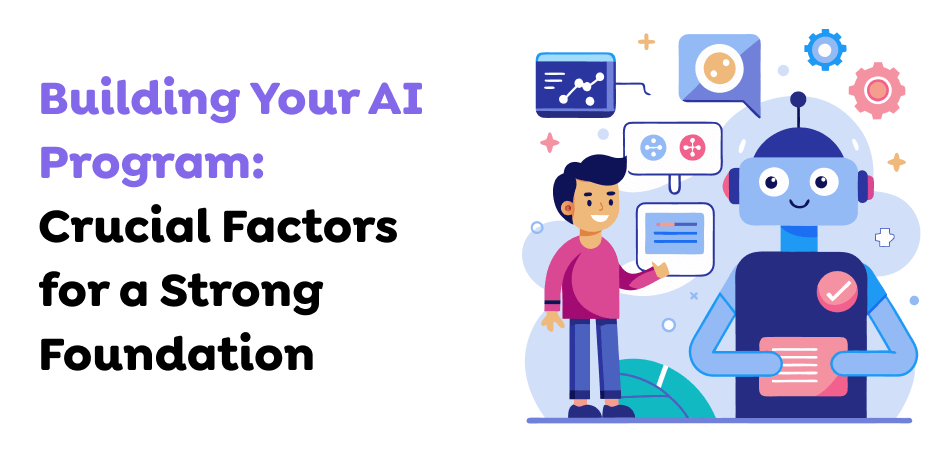
To get your AI-powered system running, you should collaborate with software developers who specialize in your industry. These developers will know how to list your application on Google Play and the Apple Store, if needed, and will also ensure that any AI machine learning or vision platform is accessible to users on the move.
When you release an AI application or an AI-powered employee management system, you must keep it updated, monitor its performance, and respond to any unusual user behavior patterns.
A seasoned offshore (IT outsourcing) team of software developers will guarantee a continual cycle in AI product maintenance. The technologies they handle will include deep learning, natural neural networks, language processing and cognitive computing, automation, robotics, data science, and other specialized technologies. With their expertise, training or developing an AI model is not an issue but rather part of their daily routine.
Also, if you’re developing software for recruitment or contemplating creating a SaaS system based on AI solutions, consider hiring developers with proven AI knowledge.
Once you’ve discovered the best way to create the ideal artificial intelligence software, it’s time to look at some aspects you should be aware of before starting this exciting journey. They aren’t an integral part of the model creation process, but they should be considered as they can significantly affect the effectiveness of your software.
1. Cost
The costs of an AI procedure for software development are generally highly variable due to the numerous variables to consider, such as the size of the data set, the complexity of the model, and the field of application. We can give an approximate estimation of how to determine how much an AI development project is going to cost based on the kind of project. The table below will explain how costs increase in line with the planned project type.
- Minimum Viable Product (MVP): $10,000 – $150,000
- Proof of Concept: $10,000 – $100,000
- Full-Scale Implementation: $25,000 – $300,000
- Fine-Tuning: $5,000 – $40,000
- Consulting: $20,000 – $80,000
Utilizing the technique of making an MVP initially, you can modify costs in line with the evolution of your business while protecting the project from an enormous initial expense.
2. Progressive Fine-Tuning
Like similar software solutions, AI models also need regular updates to keep pace with current developments or other needs. The majority of the time, the model is capable of operating by itself, but the primary issue is the training data. To fix this, it is necessary to use fine-tuning techniques to enhance the model using the latest data sets.
Additionally, developers perform fine-tuning at any time to improve the accuracy of the AI model or to adapt it for new functions. To accomplish this, they use methods like transfer learning, which keeps the AI model constantly in sync with the relevant data.
In general, retraining the model with more data can yield results. However, when the scenario is more extreme, the models’ weights can be adjusted to ensure the system functions according to the program. One good way to alter the weights of an existing model is to change the model’s natural language processing thresholds to detect inputs that are not acceptable and also with lesser tolerance to safeguard the user.
3. Integration Complexities
It’s essential to consider the probability of problems arising when you plan the AI implementation of a brand-new feature into existing software. When you work on older applications that use hosted infrastructure, the likelihood of encountering more difficulties will increase. In these cases, you need to implement a complete digital transformation to overcome the limitations of local infrastructure and effectively integrate the latest AI solutions. An upgrade to your infrastructure can result in short downtime for your current systems to allow for a smooth data transfer.
4. AI/ML Hallucinations
Be aware that most AI models and models based on machine learning are prone to hallucinations. If an AI/ML encounter is illusionary, the model created will give incorrect results or be misspelled. The wrong results are from underfitting the model due to the lack of relevant training data.
This is why it’s essential to be patient during data processing to ensure that you create your model from vast quantities of quality data—additionally, changing the weights of the model to reject requests that don’t conform to its needs aids in preventing AI hallucinations that could cause injury to standards.
A crucial factor to be considered when developing software is respect for the regulations regarding data security within the scope of its deployment. This is especially crucial for artificial intelligence software as they typically get their data for training from data sources available to the public. Because of the ambiguity surrounding how to use copyrighted materials to create AI models, keeping your certifications and licenses on file is essential to protect yourself from legal liability in the near future.
In certain industries, the lack of appropriate certifications may prevent the use of software for public or industrial purposes. This applies to most healthcare-related software. To ensure that a product is suitable for use in healthcare facilities, developers must follow various compliance standards, including HIPAA and ISO 27001.
Also Read : Understanding the Significance of AI in the Energy Sector: Key Benefits and Use Cases
Popular AI Development Methodologies
Developers utilize different methods based on the project’s scope and deployment requirements. These approaches can all be used to build the same AI solution, but they differ in how they create the final product. Some approaches, like waterfalls, provide a conclusive method, while others follow looping processes that cycle back and forth.
-
Agile:
The Agile method is one of the most widely known methods that speeds up and accelerates development.Agile utilizes the continuous cycle concept. The cycles focus on the client, meaning that developers design components and features before they can deploy them to the primary application, resulting in rapid development in short intervals.
-
DevOps:
DevOps is a method that defines the team’s overall culture. It isn’t just a functional procedure but an entire approach to work. In the DevOps method, the main goal is automation and quality testing. When SOPs are precise, like CI/CD, this approach is suitable for large-scale initiatives in which the reliability of deployments is essential.
-
MLOps:
MLOps is an additional step to the DevOps technique. The MLOps cycle focuses on top-quality deployments. The difference lies in the additional steps required to create models for machine learning and improve data. It also encourages the development of test cases unique to ML models in addition to general experiments.
-
Waterfall:
Unlike other development methods, Waterfall is an entirely different method. It is a sequential and linear way of doing things the way it functions. It’s based on developing the entire application and guiding it through the testing and deployment stages to an endpoint for maintenance. It’s a complete solution ideal for apps that can benefit from a simple development procedure.
-
Scrum:
The Scrum method, like Agile Scrum, accelerates and simplifies feature and element deployments. The Scrum master guides and oversees the entire development process to ensure smooth execution. Each “sprint,” or development cycle, typically lasts 2-4 weeks.During this time, developers choose the features they’ll create and then release.
Also Read : Revolutionizing Supply Chain Efficiency: The Role of AI in Demand Forecasting
Artificial Intelligence Software Development Across Industries and Sectors
Artificial intelligence (AI) plays a crucial role in driving innovation across numerous industries, enhancing efficiency and accuracy while fostering business growth. AI development and optimization extend across a wide range of fields, rather than being confined to a single sector.
1. AI Development in Real Estate
For the Real Estate business, AI software development is improving the way properties are purchased, sold, and managed. AI-integrated software enables you to make informed choices using predictive analytics, as well as personalized customer experiences, as well as smart property management.
2. AI Integration in Custom CRM Development
AI integration is modernizing Customer Relations Management (CRM) systems.Modern CRM tools powered by artificial intelligence can anticipate client habits and automate interactive marketing strategies.
Integrating AI in CRM could help companies understand their guests’ lives more pleasantly and increase customer retention and satisfaction.
3. AI Development in Logistics
AI is transforming the logistics industry by optimizing routes, forecasting demand, and managing inventory more efficiently. It anticipates maintenance needs, improves delivery processes, and enhances inventory control, helping companies streamline operations and increase overall efficiency.
4. AI Software Development in the Finance Sector
In the financial sector, AI identifies fraud, enhances trading, and provides customized financial advice. AI-driven software designed for finance helps institutions analyze huge data sets to detect patterns and make better decisions.
5. Artificial Intelligence in Hospitality
AI programming is integral to the hospitality sector’s overall process. It includes tools like automated booking systems, custom customer suggestions, and automated customer service.
AI-based advancements in the restaurant industry are changing the way guests used to interact before. Companies are embracing AR/VR experiences that make use of IoT technologies to help make the lives of customers more pleasurable and enjoyable.
6. AI in ERP Chatbots
Enterprise Resource Planning (ERP) systems are growing due to the integration of the system into AI chatbots. Chatbots can automate routine work and provide immediate analysis of data and enhance the decision-making process.
Conclusion
The road to AI, the creation of software, is an exciting and challenging task for founders and entrepreneurs.
However, it is essential to approach AI software development with an ethical and strategic mindset. The creators must navigate the complexities of data acquisition, model creation, model deployment, and regular monitoring while weighing ethical concerns such as privacy protection, bias reduction, and transparency.
The achievement of AI programming depends on multidisciplinary methods that unite experts in data science and software engineering, domain knowledge, and strategic business analysis.
A multi-faceted and experienced team, fostering an environment of continuous learning, and creating solid governance frameworks are vital for ensuring long-term success.
By collaborating with experienced AI Software developers and AI companies that create software, the creators can be sure that the latest AI software development and solid AI Programming software enhance their initiatives.
Get in touch with us today to learn how we can help you create cutting-edge Artificial Intelligence software for your business.
Get In touch
We are excited to here from you and let’s start something special Together. Call Us for any inquiry.
Write us
sales@techugo.caJust a call away
About you

